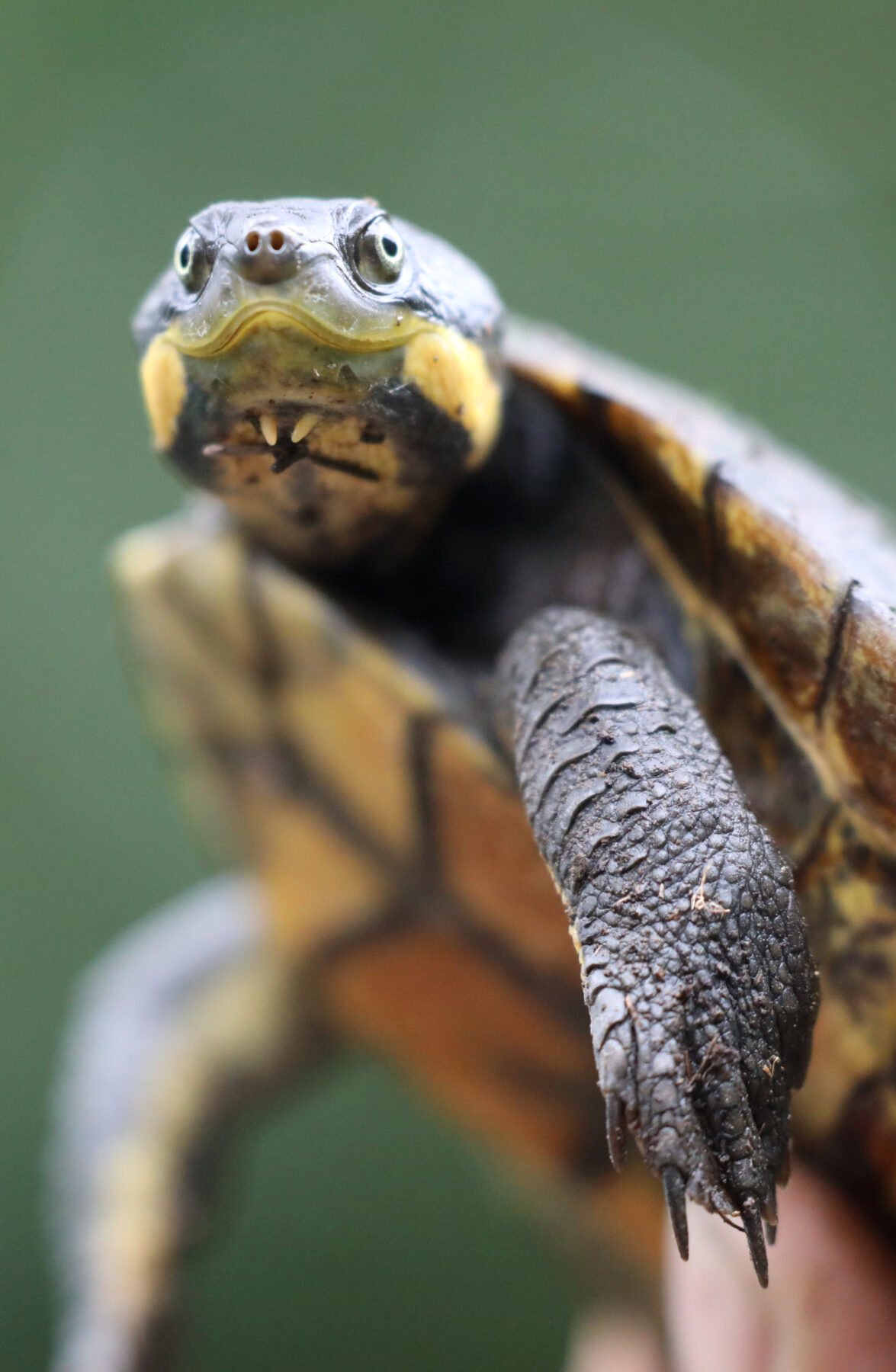Mating success for Manning River turtles

The organisation’s ‘Conservation Ark’ facility, located within the Australian Reptile Park (ARP) on the New South Wales Central Coast, is home to 10 sexually mature adult Manning River turtles (Wollulmbinia purvis).
“This is the first time we’ve seen breeding behaviour with our Manning River turtles,” says ARP Operations Manager Billy Collett.
“This is a massive historical moment… It is so exciting. And I just can’t wait to see those eggs!”
Billy managed the breeding program, pairing genetically suited females with males in large tanks.
Over the course of a month he witnessed the courtship and breeding of not just one, but multiple pairs.
Insurance population
The huge milestone is not just one for Aussie Ark, but for the turtles, too, boosting insurance population numbers to secure the survival of the species.
The breeding program began five years ago with eggs collected from the wild to save them from drought and fire, mostly notably during the 2019 Black Summer bushfires.

Manning River release
Last October Aussie Ark released 10 of their captive-bred Manning River turtles back into the Manning River.
Billy says with continued success of the breeding program, it’s hoped even more of the turtles can be returned to their homeland.

Fast facts
Scientific name
Wollulmbinia Purvis
Description
This striking, medium-sized freshwater turtle is recognised by its distinct colouring. The Manning River turtle is known for its yellow markings on the underside of its shell and tail, as well as a clear yellow stripe from the jaw down to the neck of the shell.
Habitat & Distribution
The Manning River helmeted turtle is found only on the Mid North Coast of NSW, more particularly, the species is restricted to the middle and upper stretches of the Manning River catchment area. They are found in relatively shallow, clear, continuously fast-flowing rivers with rocky and sandy substrates.
Diet & Behaviour
This species is predominately diurnal, often seen basking on logs, rocks or the river banks near deep pools. Although, nocturnal foraging in shallow areas has been observed. The Manning River turtle is thought to be omnivorous like similar turtle species. It is estimated that this turtle species has a lifespan of approximately 20 years.
Threats
Unfortunately, in recent years the Manning River helmeted turtle has seen a significant decline in numbers, although the full extent is not known. The species faces a range of threats, including predation, illegal poaching, habitat degradation and disease. Foxes not only raid the nests and eat the eggs and young turtles but also the mothers as they are laying them on the river bank. These threats have all drastically reduced the number of surviving individuals and have also left the wild population vulnerable to mass extinction in the face of any catastrophic event that may occur. Water quality, food availability and suitable nesting environments are likely to also have been affected by human use of the land in adjoining areas, causing environmental changes.
– courtesy Aussie Ark




